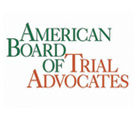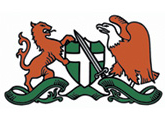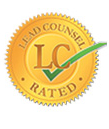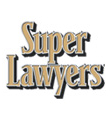Under California Vehicle Code 21703, drivers must not follow other vehicles at a distance that is not reasonable. Unfortunately, some drivers do not follow this rule, or other forms of traffic violation result in rear-end collisions. A rear-end car collision is an accident where one vehicle hits another from the rear end. Rear-end collisions often result in serious injuries such as whiplash and back injuries.
If you are a victim of a rear-end car collision, you have a right to seek compensation for the injuries resulting from the accident. While the tailing driver is mostly at fault for a rear-end collision, California does not impose automatic liability. As you seek compensation in a car accident lawsuit, you must establish liability for the accident. Proving liability helps determine the party to assume accident liability, and it acts as a basis for your claim. Understanding how fault is established in California will help you navigate the claim and recover the compensation you deserve.
Liability in Rear-End Collisions
In most rear-end car collisions, the tailing driver shoulders liability for the crash. However, liability in these accidents is not obvious. Although the tailing driver may have been following too closely, the other driver or other road users could have significantly contributed to the collision. Fault in most car accidents stems from negligence. In California, a party whose conduct is proven to be negligent will be responsible for compensating the injured victims.
The State of California operates on the comparative negligence law. Comparative negligence is a legal doctrine that provides a way to divide up fault between parties involved in an accident. If you are partially at fault for the accident, your damages will be reduced based on your negligence. The judge or a jury determines the responsibility in a car accident during the civil case proceedings. Sometimes, the defendant could claim that you contributed to the accident.
Even when it is clear that you shared a level of fault in the accident, you can still be successful in your claim and recover compensation. Comparative fault holds both the plaintiff and the defendant responsible for the damages equaling their degree of liability. If you file a car accident lawsuit, the court will subtract your percentage of fault from the compensation.
The following elements define negligence:
Duty of Care
The duty of care is a responsibility that each driver has to ensure that they do not cause foreseeable harm to other road users. Some of the ways through which a driver is required to exercise the duty of care to avoid a rear-end collision include:
- Driving at a reasonable speed. Drivers must operate vehicles at a prudent speed depending on the existing traffic. Sometimes, driving at the expected speed limit could be considered negligent when unfavorable weather conditions.
- Maintaining vehicle control. While on the road, drivers are expected to control their vehicles.
- Vigilance and keeping the right distance. Avoiding distractions and keeping the right distance between them and the driver ahead is one of the ways through which a driver can exercise a duty of care.
- Proper maintenance of the vehicle. Drivers must always ensure that their vehicles are right while on the road.
Breach of Duty
Drivers and other road users breach their duty f care towards you by acting in a manner that puts you at risk of injuries. Not all poor conduct on the road is considered a breach of duty. However, the court will consider how a reasonable person would act in a situation before determining whether the defendant was liable for the accident and your injuries.
Some of the conduct that could result in a duty of care include driving under the influence of alcohol or drugs, distracted driving, and failure to follow traffic rules.
Causation
When you establish liability in rear-end car accident lawsuits, you must prove that the consequence of the defendant’s conduct is the accident. While the defendant does not need to be the only person responsible for the accident, their negligent acts must be a significant factor in the accident.
Damages
Rear-end car collisions result in serious whiplash and back injuries. You must show the damages and injuries you suffered from the accident during establishing liability. Some of the most common damages that result from this type of accident are medical expenses, lost wages, and lost future earning capacity.
When is the Tailing Driver at Fault for a Rear-End Collision?
Mostly, the tailing driver assumes liability for a rear-end car collision. The tailing driver is expected to observe what is going on on the front side of their vehicle. When the rear driver pays attention, they should be able to stop before hitting the vehicle in front. While the tailing driver is not automatically at fault for the accident, they could be held liable under the following circumstances:
Speeding
Accor dining to the National Highway Traffic Safety Administration, speeding plays a significant role in rear-end car collisions. When a rear driver is driving at a speed limit that exceeds the recommended, they can easily collide with other vehicles. Driving at high speed with poor roads, heavy traffic, or unfavorable conditions makes it challenging to control the vehicle or stop during an emergency. In this case, the rear driver could hit the other driver and cause a serious accident.
Tailgating
In California, it is an offense to follow the vehicle in front of you too closely. The court determines whether or not the distance at which the defendant was following the other vehicle is reasonable based on the road conditions and circumstances. Following too closely is one of the most common causes of rear-end collisions.
Tailgating is an annoying and dangerous behavior that can signify carelessness or aggressive driving. At any speed, there is a safe distance at which the rear driver can stop on time even when the leading driver makes an unprecedented move. Some of the most common causes of tailgating include heavy traffic or being in a hurry.
Drunk Driving
Despite the public awareness of the dangers of drunk driving, drivers in California continue to operate while intoxicated with drugs or alcohol. Using drugs or alcohol impairs a driver’s judgment and slows down their reaction time. Additionally, the depth and distance perception of an intoxicated driver is compromised. This makes it difficult for them to comprehend the distance between them and the driver in front of them, resulting in serious rear-end accidents.
If you are hit from behind by a drunk driver, you must ensure that their alcohol content at the scene is taken to establish their status. In most cases, proving that the defendant was drunk driving will help you establish liability for the accident.
Distracted Driving
Distracted driving has become an epidemic in the United States. Each day, people suffer accidents and serious injuries resulting from distracted driving. Driver distraction is any activity or factor which takes away a driver’s mental and physical concentration from the road. Most rear drivers who cause rear-end collisions are often distracted. This makes it difficult for them to notice and acknowledge the lead driver. Some of the most common forms of driver distraction include:
- Texting while driving. Using a cellphone to text or receive a call is a leading cause of driver distractions.
- Adjusting or using the GPS while on the wheel
- Drinking or eating while on the road
- Personal grooming while on the road
Engaging in the above activities could lower a driver’s concentration or reaction to situations on the road, causing them to hit other vehicles from behind.
Disobeying Traffic Rules
Failure to obey traffic rules is another significant factor contributing to rear-end car collisions. Traffic rules are meant to control traffic and keep order. Without traffic rules, the road could become chaotic and congested. Drivers who fail to follow these traffic rules put themselves and other drivers in danger of accidents and subsequent injuries.
One of the most common traffic violations contributing to rear-end collisions is the failure to yield the right of way. A failure to yield accident occurs when one driver fails to respect the other driver’s right of way, resulting in a crash. Other common traffic violations that could result in such an accident include disregarding traffic signals and following closely.
When is the Lead Driver Liable for a Rear-End Collision?
Since liability in the rear-end collision is not assigned automatically, the front driver could shoulder partial or full responsibility for the collision if their negligence caused the accident. Some of the reasons why the leading driver could shoulder liability for a rear-end car collision include:
Failure to Use Turn Signals
The failure to use traffic signals is a common cause of car accidents. A rend end crash could occur when a driver neglects to use turn signals when changing lanes or making turns. If the lead driver does not use their signals correctly, they could be held responsible for the crash and the resulting injuries. When liability becomes an issue during a rear-end car accident resulting from the failure to use turn signals, it is crucial to involve a competent car accident attorney.
Defective Brake Lights
Vehicle condition plays a significant role in the safety of the driver and other road users. Some people may think that minor car issues are not important. However, issues like broken, tinted, or blinking tail lights can cause serious rear-end collisions. In California, every vehicle must have working taillights, and these lights must create an amber or red-colored light.
If a driver operates a vehicle with broken brake lights, they could be held liable for a rear-end collision even when they were hit by another vehicle. Additionally, liability could move down to the vehicle repair shop, or the brake light manufacturer could be at fault for the crash.
Road Rage
Road rage occurs when a driver or motorist exhibits aggressive and angry behavior towards other road users. Road rage could involve verbal threats, rude gestures, or driving dangerously towards another driver. In some cases, rear-end car accidents result from road rage from the lead driver. For example, when an enraged driver pulls out in front of another motorist and brakes suddenly, a rear-end collision resulting from such conduct will be blamed on the lead driver.
Sometimes, the lead driver could divert the blame onto the driver who hit them, which is easy when they have fully functional brake lights. When there is an issue of road rage in a rear-end collision, the driver who operates recklessly may shoulder liability for the accident.
Reversing Into Another Vehicle
Drivers do not always anticipate that the driver in front of them will be reversing. Additionally, each driver perceives the distance, time, and sequence of events that lead up to a collision. Rear-end collisions resulting from unanticipated reversing often occur in parking lots, and the backing-up driver could be held liable for the crash. Some of the factors that could be considered when determining whether the moving drivers are liable in this kind of rear-end crash include:
- Whether or not the driver had the right of way. In every situation on the road, one driver always has the right of way. However, there are some exceptions, especially when multiple vehicles are backing up.
- Location of vehicle damage. Sometimes, the location of the damage on the vehicles will help determine whether the rear of the lead driver is at fault for a rear-end collision. The type and position of damage help determine whether the driver could have avoided the accident.
- Witness statements. In a rear-end car accident lawsuit, both the defendant and the alleged victim will have different versions of the events. There are witness testimonies that could make a difference in these accounts. Additionally, the police report written during the initial assessment of the accident could help determine fault.
Pulling out Directly In front of Another Vehicle
The issue of fault when one vehicle pulls up suddenly is complicated. Both the driver who pulls out and the one who hits them could be held liable for the collision. If the lead driver pulls out into moving traffic and swerves into different lanes without proper signaling, the court could hold them liable for the accident.
Braking Suddenly
Sudden braking is a common cause of rear-end collisions. When the lead driver stops suddenly on a highway with a high-speed limit, the rear driver could hit the lead driver from behind. While the lead driver could be held liable for the accident, it is not automatic. If the rear driver was not keeping the right distance given the circumstances, the liability for this type of accident could be shared.
If the lead driver is distracted from using the phone, eating, or looking at maps, they may be compelled to stop suddenly, thus resulting in a series of collisions. On the other hand, a rear driver who follows too closely may lack enough time to stop when the lead driver stops suddenly.
Multiple Vehicle Rear-End Collisions
It is not uncommon for a rear-end collision to involve multiple vehicles. This may involve one vehicle hitting another from the rear, and the sequence continues with the vehicles behind. In this case, several parties could be held liable for the accident. Sometimes, liability for a rear-end collision may not lie on the drivers involved in the accident. A rear-end collision may be a result of:
- Dangerous road conditions. Poor roads often make it difficult for a driver to control the vehicle. Therefore, the accident may not result from either driver’s negligence.
- Cyclists or pedestrians who fail to follow traffic rules
- Vehicle maintenance personnel or brake and brake light manufacturers. When a rear-end collision is a result of faulty brakes or brake lights, the manufacturer of these parts could be held partially liable for the accident
- Other reckless drivers. Sometimes, the drivers involved in a rear-end collision may not have any part to play in the accident. In this case, other negligent drivers could be held liable for the accident. `
Find a Skilled Car Accident Attorney Near Me
Rear-end Car Collisions are a common occurrence in California. Individuals who suffer injuries in a rear-end car collision have a right to recover compensation by filing a car accident claim. Before you recover any form of compensation after a car accident in California, you must prove that the defendant’s negligence resulted in the accident and your injuries. The issue of liability is significant during rear-end collision car accident claims. While it is a common belief that the tailing driver is always at fault, this is not 3tdralways the case.
The process of recovering compensation for an auto accident claim can be challenging, especially when the issue of liability is not apparent. Therefore, seeking some legal guidance as you battle a rear-end car accident claim is crucial. At Los Angeles Car Accident Attorney, we will guide you through the process of establishing liability and recovering compensation for your injuries. We serve clients seeking legal guidance and representation to navigate a car accident claim in Los Angeles, CA. Contact us today at 424-237-3600.






